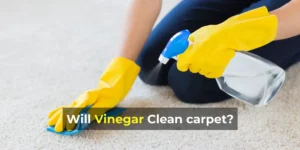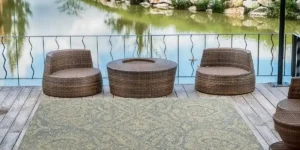A hardwood floor represents elegance and sophistication in a home’s design and comfort.
Homeowners prefer hardwood floors because they are elegant and simple.
Do you know? Many people love their looks.
But some people are against them.
Because they believe hardwood floors make their house colder.
No. Hardwood floors don’t make your house colder.
They can be temperature-neutral. They may feel colder due to their conductive properties.
But proper insulation solves this. For detailed answers continue reading the article.
Let’s discuss the truth and clarify this complicated subject.
Do Hardwood Floors Make Your House Colder?
No, it is possible. The floor can’t affect the house temperature.
While hardwood floors conduct heat, they do little to influence the interior temperature.
Here’s how hardwood flooring can affect the overall temperature experience in a home:
Conductive Nature: Hardwood is a good conductor of temperature.
Meaning it can feel cool to the touch, especially in colder weather.
When you walk on hardwood floors with bare feet, it might feel cooler compared to walking on carpet, tile, or other flooring materials.
Lack of Insulation: Hardwood floors generally provide less insulation compared to materials like carpet.
Carpets have natural insulating properties, which can make a room feel warmer.
If you switch from carpet to hardwood, you might notice a difference in how the floor feels beneath your feet.
Drafts and Gaps: If there are gaps or spaces in the hardwood flooring.
If the flooring is not insulated, it can contribute to drafts.
Drafts can make a room feel colder as cold air enters from below.
Note that hardwood flooring can affect the perceived temperature in a room.
Are Hardwood Floors Sensitive to Humidity Changes?
Yes, hardwood floors are sensitive to humidity changes.
Humidity levels can cause natural materials like wood to expand or contract.
Hardwood floors may swell and warp with added moisture, which can lead to buckling or warping.
When humidity is low, wood releases moisture and shrinks, resulting in gaps between planks.
Proper flooring installation techniques and controlling indoor humidity levels are essential.
6 Ways to Keep Hardwood Floors Warm
#1 Get a Comfortable Area Rug:
Hardwood floors look great on their own, but if you want to add warmth, consider using area rugs.
It might not be your first thought, but it’s like a magic trick.
Choose rugs that are thick and fluffy and match your home’s colors.
Avoid distracting patterns that might clash with other elements in your home.
Place the rugs where needed, whether in the living room, bedroom, or common areas.
#2 Check the Hardwood Floor Condition:
You should give your hardwood floors a quick inspection. Be sure to inspect for scratches and dents.
Over time, hardwood floors lose their quality due to excessive moisture.
It may be the result of high humidity, improper installation, or water under the floor.
Hardwood floors can become damaged for all of these reasons.
#3 Underfloor Heating:
It is effective in heating hardwood floors underfoot.
It minimizes temperature differences by evenly distributing heat.
A comfortable environment is maintained by hardwood’s thermal mass.
To maximize the benefits of underfloor heating, choose the right wood species.
#4 Repair Cracks:
Hardwood floors can be repaired by cleaning, filling cracks with wood filler, sanding, staining, and sealing the surface.
Regularly inspect and address cracks to prevent further damage and maintain the floor’s integrity.
#5 Proper Insulation:
To maintain a warm temperature, hardwood floors must be properly insulated.
Insulation prevents heat loss through the floor and maintains a comfortable temperature indoors.
The hardwood is protected from temperature fluctuations, ensuring comfort.
The insulating properties of hardwood floors complement the insulating properties of insulation.
#6 Check the Ventilation System:
There is a cooling effect associated with hardwood.
However, if your house seems too old at times, it may be a ventilation issue.
The problem could be due to inadequate insulation or a defective furnace.
When your heating system fails, it can terminate your entire home.
Tips for Managing Temperature
- Insulate Properly: Insulation keeps the temperature consistent indoors, which reduces cooling and heating costs.
- Proper Ventilation: Keep the indoor air fresh by opening windows and doors to bring in fresh air to prevent stagnation.
- Leverage Curtains and Blinds: Make sure your curtains and blinds are open during the day so that sunlight can naturally heat your home. Keep them closed at night to keep the warmth in.
- Seal Gaps: To prevent drafts and air leakages, seal gaps in windows, doors, and other opening components.
More On Hardwood Flooring:
- Can Hardwood Flooring Acclimate in The Box? (Explained)
- Can You Put Laminate Flooring Over Ceramic Tile? (A Comprehensive Guide)
- Can I Use Laminate Flooring On Walls? (Installation Guide Included)
- Can Mold Grow Under Vinyl Plank Flooring? (Answered)





